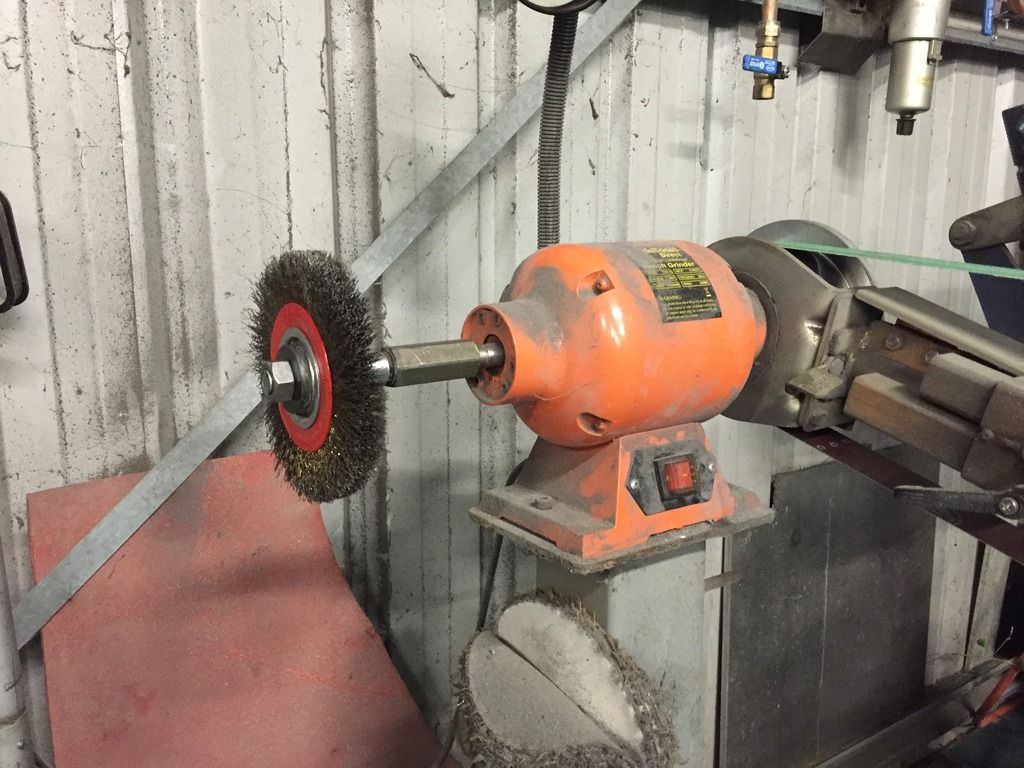Last edited by ozzy1100; 04-02-2016 at 10:23 PM.

Mate, I'd just have that on display in my front room, regadless of what it was supposed to do.
Love it.
Geez that's fancy lookin', You sure you know what to do with them ? heh hehe heh
measure and correction are to very different animals so as I have fuck all chance of one I have given
very little thought to the other. Verification on the other hand is very much the catch call for the final
assembly then welding sequence...... I still have to dowel the base plates when a mag base drill turns up,
but apart from that and some test welds, clamp making etc I think a day with two blokes should see it finished
Thought about Tig-brazing it to minimise distortion?
Yes, actually gone as far as to test some silicon bronze tig brazing. In two minds as yet,
cant see how it will pull any less and that is more of a concern than distortion. Tho
I recon I was over 30% less amps to weld the same test piece then with er70s-2 steel.
Thing is I don't know if this is the job to test how the braze comperes to steel in strength terms
as these sections are the datum for the whole process and will ultimately be required to transfer
large forces.
nice work mate ,did you screw cut those threads
The amount of force you're going to apply isn't going to be enough to make the bronze move... It's pretty clear you've designed for deflection rather than to yield strengths. Should pull less than normal tigging - brazing has always been the way to go for minimum movement.
kinda agree, still with a upwards of 20 ton porta power levering of the front of a frame it still makes my arse pucker
on using a new technic on a vital part I only get one chance at after its eaten a few 100 hours.......
Its still a close call even tho yield strength is between a 1/3 and 1/2 less than steel but your correct I designed as much
of this out as I could. mind you this design is still all just by eye and a stab in the dark..
So I find myself waiting for some parts to come in
and nothing to do on a Saturday night. Fixed that problem
by drinking and tooling around. One fix was to actually fix
something in the shop. The 8" bench grinder was set up
with the linisher one side and a buff the other. Problem
being the polishing of parts IMO should only involve the removal
of my pants and not shinny metal...... Ages ago I took the wire
wheel of the 6" grinder to install a wheel just for carbide tools and
tungstens. The wire wheel tho had proved very useful and I missed using
it. Solution, cut up the buff adaptor so I keep the left hand thread. I had
made spacers back in the day to fit said wire wheel to the 6" grinder, drilled to
suit the 16mm shaft. I thought some extra width would come in handy. So
I turned down a 16 mm bolt I found in the misc bolt bin. Join the two
with hot metal and a spacer later I have was done. A spot of nut lock on the 16mm
nut as the grinder thread is left hand on that side for a reason and I was done.
Warning ffs anyone that uses wire wheels on anything wear your eye protection......
I personally know someone that has had a piece of wire from his eye. He kept his sight
but the story of being fully lucid as they pulled it out his eye, and as I have in the past
removed bits of javelin like thin horribly painful bits of evil from my flesh I can only recommend
safe practice....... So things in the workshop are not so forgiving.......

Wire wheels are awesome, I had one on the angle grinder the other day to clean up a ratty expanson chamber.
Eye protection is essential as you've said mate, hell I even had my young fellas wear safety glasses even though they were watching from several metres away.